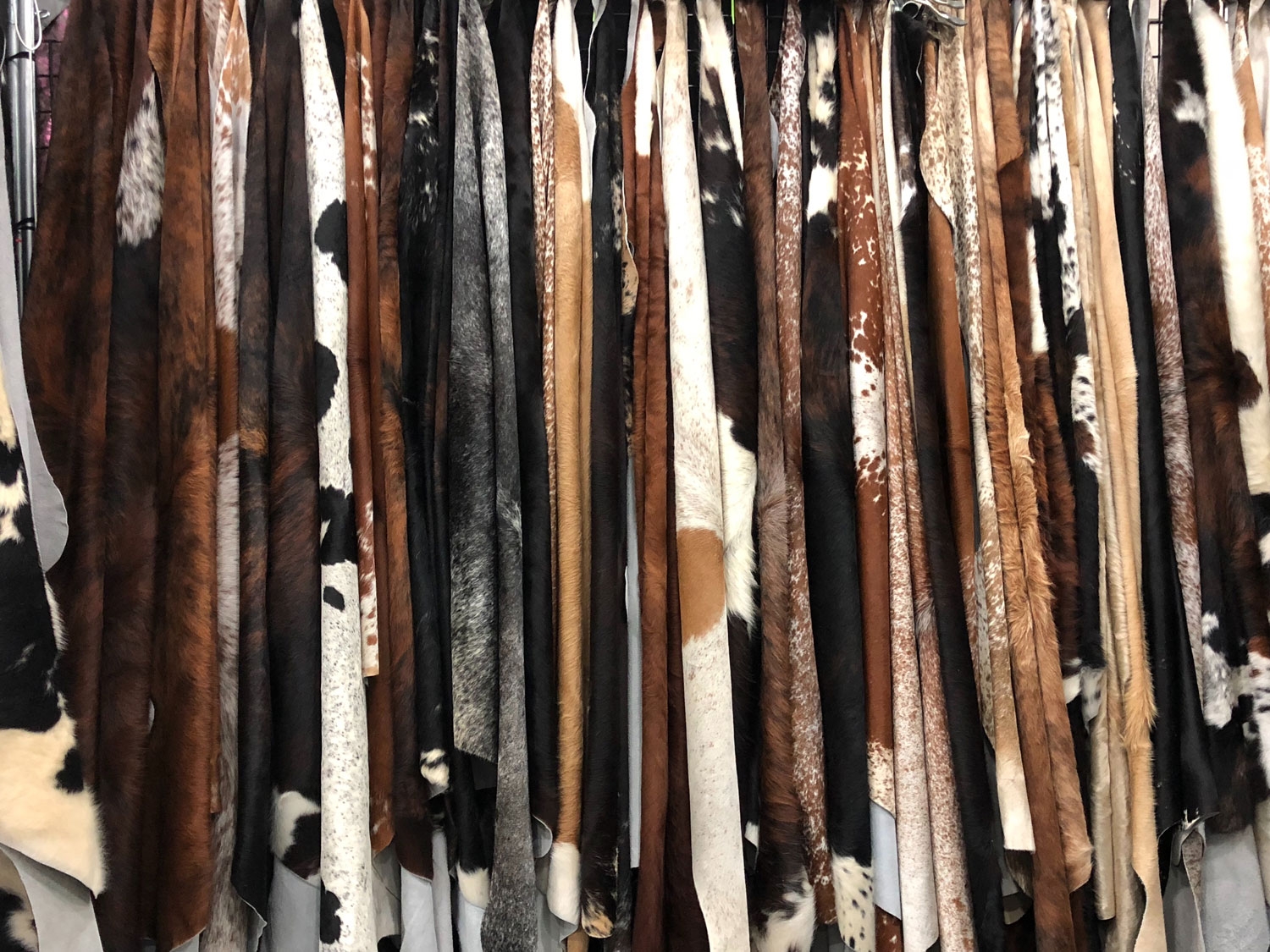9 Random Facts About Cowhide
- By Ignacio Toro
- Feb 6, 2023

Humans have been using animal skins and furs since at least 3000 BC.
Early humans and Native Americans used animal materials for warmth and as shelters for protection from the elements. Some of the earliest boats used leather sails, and even golf balls were once made of animal skin!
Modern uses of leather products lean more toward decorative elements and apparel (including wallets, shoes, and belts), but their popularity is as strong as ever.
Probably the most well-known animal-skin product is cowhide, which is the natural skin and hair of a cow. Once removed from the cow, the hide is salted and put through a tanning process to soften and dry it for use. This process used to take up to a year, but advances in technology have made it a much quicker process today.
Cowhide is an incredibly popular material for rugs and upholstery. It is durable, soft, and easy to maintain. Because of the large cattle industries in many countries, cowhide products are also more affordable than other varieties.
If you haven’t thought much about cowhide before, you may be surprised to learn a few things. Keep reading for 9 random facts about cowhide that you probably don’t know!
1. Cowhide and leather aren’t the same things.
Many people use the two words interchangeably, but there are actually some differences between cowhide and leather. Essentially, cowhide can be a form of leather if tanned correctly, but not all leather is made of cowhide. Leather can come from all kinds of other animals, including ostrich and alligator.
2. Cowhide is the most common type of leather.
The leather industry generates tens of billions of dollars each year, and most of that comes from cowhide. While it doesn’t represent 100% of leather products, it is definitely the most popular. This is likely because it is very easy to care for and easier to acquire in large quantities. Cowhide is also one of the thickest skins used for leather, which makes it desirable for furniture and rugs.
One place you won’t find a significant amount of cowhide is India, where cows are considered sacred animals and are not used for meat or hides nearly as often as in other countries.
3. Cowhide is a by-product of the meat and dairy industries.
Contrary to the myth that cowhide represents a cruel process, cowhides in the US are from cows already being used for meat and dairy. Tanneries collect the hides directly from slaughterhouses, and no cows are killed specifically for their hides. However, this may not be the case everywhere, so do careful research into your supplier to make sure they are treating their animals well.
4. Cowhide is naturally hypoallergenic.
One reason cowhide rugs are so popular is that they are hypoallergenic. Unlike many rugs, they will not aggravate allergies of family members or visitors and do not shed fibers. Cowhide rugs do have a leather smell but will not contain fumes or remnants of the tanning process once sold.
If cowhide needs to be cleaned, just wipe with a damp cloth. It is naturally stain-resistant. Never saturate a cowhide with water or place in a traditional washing machine.
5. One cowhide skin can produce 20 American footballs!
Estimates vary, but one cowhide can make quite a few footballs, soccer balls, or basketballs. Footballs used in the NFL are still made of cowhide and are individually handsewn. These come from the Wilson company, who distributes 108 cowhide footballs to each NFL team at the start of every season.
6. The value of cowhide represents 5-10% of the total value of the animal.
Cowhides are sourced from the meat and dairy industries where the hides would otherwise be discarded. This leather byproduct of cattle farming represents about 5-10% of the cow’s value, while its meat and milk account for the remainder. In the United States, animal welfare laws prevent the slaughter of animals for purposes of making leather.
7. Cowhide can look like a zebra.
Cowhide can generally be dyed to look like anything you want! Many suppliers will entertain all kinds of customer requests, from different colors to tiger stripes.
A popular finishing effect for cowhide products today is a metallic sheen. Artists will paint the cowhide with shades of gold, silver, and so on to create a glittery effect. Cowhides are most typically presented in their natural colors though.
8. No two cowhides are exactly alike.
Because authentic cowhides are from actual cows, they contain the unique markings and features of those cows. Cowhides for sale will showcase the natural colors, shapes, and textures of the cows they came from. While they can be dyed to look alike, they will never be truly identical.
When you purchase cowhides from different regions of the world, you can find interesting variations in appearance. Some cows may be black with white spots, others brown, and some may even contain branding marks from the original owners. Cowhide represents a great opportunity to own a one-of-a-kind product.
9. Brazil and the United States are the biggest suppliers of cowhide skins by volume.
Almost all cowhide skins come from Brazil and the United States. Argentina and Colombia are also known for their high-quality cowhides. Brazil is typically considered to be the best source for soft and supple hides. If you see cowhides for sale from a different region, be sure to do your research to ensure that they are held to the same quality and ethical production standards.
All in all, cowhide is an incredibly versatile and dynamic product. It can be a great option for rugs and other interior design elements. Cowhide has been a popular material for centuries and has been used to make books, mugs, and even wallpaper.
It’s durability and limited maintenance needs mean it can last you a lifetime while maintaining its quality. Today, its production is humane and sustainable and contributes to many different industries.
